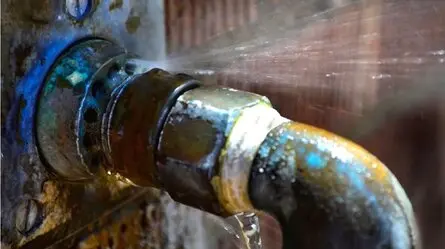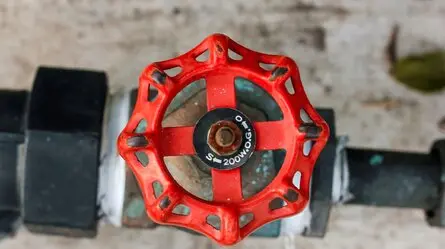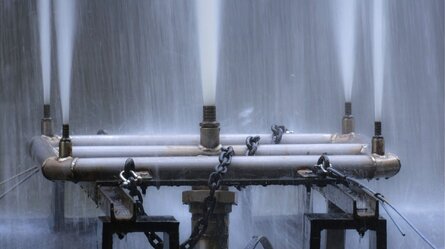Ever wondered if your outdated shower could actually be damaging your house? The short answer is absolutely. Showers cop a daily beating, and when wear and tear start to show, it’s often more than just cosmetic. Left unchecked, issues like water damage, mould and rising water usage can lead to serious structural problems—and hefty bills.
In this blog, we’ll explore the most common signs that it’s time to replace your shower. From persistent leaks to bad smells and poor water pressure, these telltale signs could be your bathroom’s way of crying out for help. Knowing what to look for could save you thousands and protect your entire bathroom from bigger trouble.
Visible Wear and Tear
One of the most obvious signs you need to replace your shower is visible damage. Cracked or loose tiles in your shower area aren’t just an eyesore—they can let water seep through to the wall and bathroom floor, causing long-term structural damage. Peeling grout?
That’s another giveaway. When the seal starts breaking down, water slips behind the scenes and sets the stage for mould and mildew.
You might also spot rust on the metal fittings or an old shower screen that’s corroded and tough to clean. These aren’t just signs of age—they’re signals your bathroom fixtures could be falling behind modern safety or water efficiency codes.
Newer materials are easier to clean, more hygienic, and offer water-saving features that your outdated shower setup likely lacks.
So, if you’re seeing wear, stains, or a faded finish that just won’t scrub off, it might be time to stop patching and start planning an upgrade. Replacing your shower now could prevent a much bigger technical or plumbing issue later.
Persistent Leaks and Water Damage

If you constantly hear dripping or notice puddles that appear without warning, chances are your shower has a leak problem. Frequent repairs that don’t last long suggest a deeper technical or plumbing issue that simple fixes won’t solve.
One of the most common signs of hidden trouble is water damage beyond the shower area. Check for stains on nearby walls, ceilings or even the floor in adjacent rooms. Soft spots or swelling in the wall or bathroom floor can indicate structural damage from long-term leaks.
Worse still, these conditions create the perfect environment for mould and mildew to flourish. A musty smell or patches of mildew are clear indicators of trapped moisture. Beyond looking unsightly, mould can lead to serious health concerns, especially for anyone with allergies or respiratory issues.
Don’t wait until it spreads. If your shower keeps leaking despite repairs—or the damp just won’t go away—it’s likely time to replace your shower before it causes irreversible damage.
Drop in Water Pressure
Struggling with low water pressure every time you step under the shower head? It’s more than just annoying—it could be a warning sign. Gradual or fluctuating water pressure often stems from pipe corrosion, mineral buildup or scale inside your plumbing.
Older systems weren’t designed to handle today’s water-efficient shower heads, which can create frustratingly slow water flow. And if your system’s clogged up or ageing, the whole setup might be dragging your shower’s performance down.
This doesn’t just affect your morning routine—it reduces efficiency and can increase water usage over time. If the pressure keeps dipping, it might be time for a broader plumbing check or even replacing the entire shower system altogether.
Outdated Design and Poor Functionality
A shower should be functional and fit your lifestyle, not just take up space. If your current layout feels awkward or your old shower screen makes the room feel cramped, your bathroom might be due for a rethink.
Outdated designs often lack water-saving features, leading to increased water usage and higher bills. Plus, old shower heads and dated fixtures can make the entire bathroom feel drab. A fresh upgrade with modern features like frameless shower screens, dual-head systems or easy to clean surfaces can make a big difference.
It’s not just about style today’s systems offer better performance, less maintenance, and more efficient water flow. So, if your shower doesn’t match your needs or your taste anymore, it’s probably time to consider replacing it.
Recurring Repairs and Maintenance Costs

If you’re constantly calling a plumber or replacing broken parts, it’s a sign you’re pouring money into short-term fixes. Those quick patch jobs on the shower head or fittings might seem cheaper at first, but they add up fast.
One of the most common signs it’s time to replace your shower is when the costs of repairs outweigh the benefits. Every loose tile, leak or cold water surprise could point to bigger problems lurking behind the scenes.
In the long run, replacing the entire shower—or even the entire bathroom if needed can be more cost effective. Think of it as a long-term investment. A new shower with updated plumbing and fittings saves you hassle, improves efficiency and cuts back on future repair costs.
Unpleasant Smells or Drain Issues
If your shower leaves behind a lingering stink, that’s not normal. Bad odours, especially a sewer smell, could mean cracked drainage pipes or biofilm buildup inside your plumbing.
Another red flag? Pooling water around the drain or slow drainage, which can make the bathroom feel dirty, no matter how much you clean. These issues don’t just affect comfort, they can pose real hygiene risks.
It’s one of the more obvious signs that something is off, and ignoring it could lead to mould, mildew or worse. If your shower constantly smells funky or doesn’t drain properly, it’s time to take action.
Signs of Mould and Mildew That Keep Coming Back
Some mould problems are more than just surface deep. If you’ve scrubbed your shower area thoroughly, only to see mould and mildew return within days, you could be dealing with a waterproofing issue.
Discolouration in grout lines and that persistent musty smell, even with good ventilation, are signs that your shower might be harbouring hidden moisture. Poor sealing or outdated materials can trap water behind tiles and under the bathroom floor.
These aren’t just cosmetic issues. Repeat mould growth could mean it’s time to replace your shower and ensure the area is properly sealed, ventilated and safe for daily use.
Time for a Bathroom Renovation?

Sometimes it’s not just about a worn-out shower it’s about transforming your entire bathroom. Replacing your shower might be part of a bigger picture, especially if you’re updating your lifestyle or prepping your house for sale.
Modern upgrades like a new shower head, frameless glass screen or easy to clean surfaces can add stylish elegance and make the room feel bigger. Pair that with improved water flow and efficient fixtures, and you’ve got a bathroom that looks great and works better too.
An upgrade to your bathroom isn’t just practical, it’s a way to boost your property’s appeal and functionality. If the space feels tired or dated, it might be time to upgrade more than just your old shower screen.
Don’t Let a Tired Shower Drain Your Home
Spotting the signs you need to replace your shower early can make a big difference. From low water pressure and wear and tear to bad smells and recurring repairs, ignoring the clues could lead to costly repairs and long-term damage.
A proactive approach saves you money, protects your house, and makes your shower experience a whole lot better.
If your shower’s starting to show any of these signs, it might be time to make a change. At Woolf Plumbing, we’re experts in installing Showers and can guide you through the process from start to finish. Get in touch today to chat with a licensed plumber and bring your bathroom back to life.




